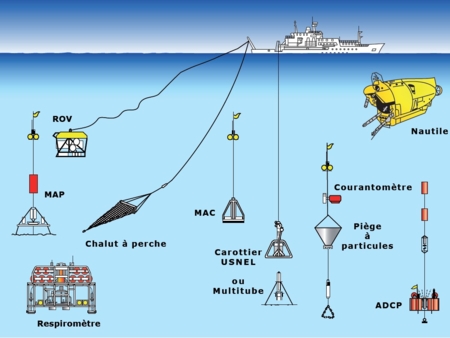PhD defence of Marion Le Gal
Exploration of marine microbial biodiversity for polyhydroxyalkanoates production and development of new MRI-visible biomaterials
Please come to Marion Le Gal's PhD defence, it will take place in IUEM Amphi A Monday 12th of July 2:00 pm
Abstract
Polyhydroxyalkanoates (PHA) are natural polymers produced by a wide variety of bacteria. These natural polyesters are biobased, biodegradable and biocompatible. They are therefore of major interest for applications in the biomedical field. In the present thesis, the production capacities of different bacterial strains from the marine bacterial biodiversity have been studied. Three strains belonging to the genus Pseudomonas were found to be promising candidates for the production of unsaturated PHAMCL when grown from a mixture of coprah oil and 10-undecenoic acid. Optimization of the production allowed the biosynthesis of PHAMCL of original and controlled structure, with 10% to 80% unsaturation, with production yields reaching 38%. Their characterization by SEC and DSC revealed high molecular weight biopolymers with low crystallinity. FTIR, NMR and GCMS analyses allowed to determine their chemical structure and to confirm the terminal position of unsaturation, allowing future functionalization by click-chemistry. Two MRI visible devices have been developed. On the one hand, an amphiphilic fluorinated PHA, PHA-g-(F;PEG), was synthesized by a thiol-ene reaction. Nanocapsules, based on PHA-g(F;PEG) loaded with perfluorooctyl bromide obtained by emulsion-evaporation, with a diameter close to 250-300 nm, were found to be visible in 19F MRI with an acquisition time of only 15 min. On the other hand, the PHA-g-(C8F17) copolymer was prepared by grafting perfluorodecanethiol. Microstructure characterization by SEM-EDX and DSC (modulated and conventional) showed the formation of fluorinated microdomains. Hahn Echo experiments showed a T2 of the order of 1.2 ms, suitable for UTE detection sequences. Therefore, biomaterials prepared by 3D printing and coated with PHA-g-(C8F17) have the potential to be used as novel contrast agents for 19F MRI. These results highlight a multidisciplinary thesis project, from bacterial culture to the valorization of the synthesized biomolecules.







